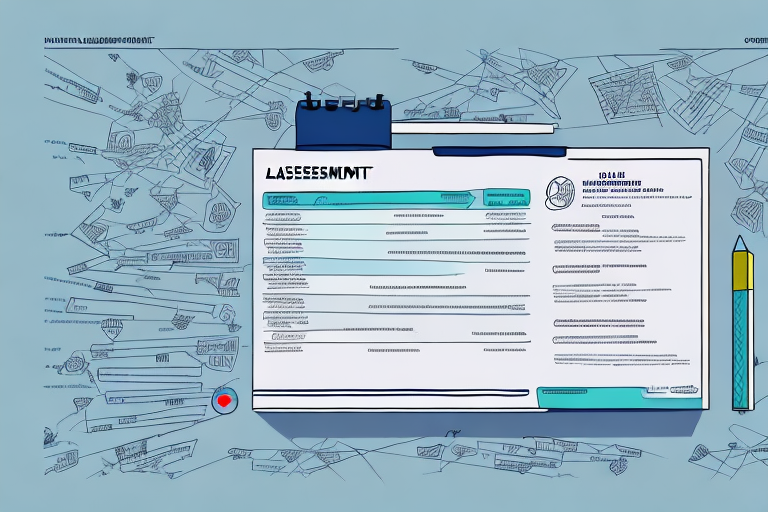Trade compliance risk assessment is an integral part of any organization’s international trade operations. By conducting a thorough risk assessment, companies can identify potential compliance risks and develop strategies to mitigate them. In this article, we will explore the key concepts and importance of trade compliance, the basics of trade compliance risk assessment, common challenges, and provide a step-by-step guide to conducting an effective risk assessment.
Understanding Trade Compliance: Key Concepts and Importance
Trade compliance refers to the adherence to laws, regulations, and policies governing international trade. It involves ensuring that all import and export activities comply with customs laws, trade agreements, sanctions, embargoes, and other regulatory requirements. Failure to comply with these regulations can result in severe consequences, including financial penalties, loss of business reputation, and even criminal charges.
Establishing an effective trade compliance program is essential to minimize risks and maintain the integrity of international trade operations. A comprehensive risk assessment forms the foundation of such a program, enabling organizations to identify potential compliance risks and develop strategies to address them proactively.
One key concept in trade compliance is the classification of goods. Each product that is imported or exported must be classified according to a standardized system, such as the Harmonized System (HS) code. This classification determines the applicable duties, taxes, and regulations for the product. Accurate classification is crucial to ensure compliance and avoid potential penalties or delays in customs clearance.
Another important aspect of trade compliance is the management of trade documentation. Proper documentation is essential to demonstrate compliance with regulations and facilitate the smooth flow of goods across borders. This includes maintaining records of invoices, bills of lading, certificates of origin, and any other relevant documents. Organizations must establish robust document management processes to ensure accuracy, accessibility, and compliance with record-keeping requirements.
The Basics of Trade Compliance Risk Assessment
A trade compliance risk assessment involves a systematic evaluation of an organization’s import and export activities to determine potential compliance risks. It aims to identify vulnerabilities, assess their potential impact, and prioritize them based on their likelihood and severity.
The risk assessment process typically begins by mapping out the organization’s trade activities, including the countries involved, products traded, and parties with whom the organization interacts. It then involves identifying potential risks associated with each trade activity, such as regulatory compliance, documentation accuracy, classification, valuation, and licensing requirements.
Once potential risks are identified, they are evaluated based on their likelihood of occurrence and potential impact. This evaluation helps organizations prioritize risks and allocate resources effectively to address the most critical concerns.
After the risks have been prioritized, organizations can develop and implement risk mitigation strategies. These strategies may include implementing internal controls, conducting regular audits, providing training to employees, and establishing strong relationships with customs authorities and other relevant stakeholders. By proactively addressing compliance risks, organizations can minimize the likelihood of penalties, fines, and reputational damage, while also ensuring smooth and efficient trade operations.
Common Challenges in Trade Compliance Risk Assessment
While trade compliance risk assessments are crucial, several challenges often hinder organizations from conducting them effectively. These challenges include:
- Lack of awareness: Many organizations underestimate the importance of trade compliance risk assessment or lack knowledge about the relevant regulations.
- Complexity of regulations: The ever-changing and complex nature of international trade regulations can make it challenging to stay up to date and understand their implications fully.
- Data management: Gathering and managing vast amounts of trade-related data can be overwhelming and time-consuming.
- Resource constraints: Limited budget, personnel, and technological resources can hinder the implementation of a robust risk assessment process.
- Insufficient training: Inadequate training and education on trade compliance can result in errors and misunderstandings when conducting risk assessments.
Organizations must recognize and overcome these challenges to ensure the effectiveness of their trade compliance risk assessment processes.
One additional challenge in trade compliance risk assessment is the lack of standardized processes and methodologies. Different organizations may have varying approaches to conducting risk assessments, which can lead to inconsistencies and difficulties in comparing and benchmarking results.
Another challenge is the dynamic nature of global supply chains. With the increasing complexity and interconnectedness of supply chains, it becomes challenging to identify and assess risks accurately. Factors such as multiple suppliers, changing trade routes, and geopolitical events can significantly impact trade compliance risks.
Step-by-Step Guide to Conducting a Trade Compliance Risk Assessment
Conducting a trade compliance risk assessment involves several distinct steps:
- Establish the purpose and objectives of the risk assessment.
- Identify and map out all trade activities, including imports, exports, and relevant parties.
- Identify potential compliance risks associated with each trade activity.
- Evaluate the likelihood and potential impact of each identified risk.
- Prioritize risks based on their significance and allocate appropriate resources for risk mitigation.
- Develop strategies and controls to address identified risks, including policy adjustments, process improvements, and training initiatives.
- Implement and monitor the effectiveness of risk mitigation measures.
It is essential to involve key stakeholders, such as compliance officers, legal advisors, and relevant business units, throughout the risk assessment process to ensure comprehensive coverage and support.
One important aspect of conducting a trade compliance risk assessment is to regularly review and update the assessment to account for changes in regulations, business practices, and market conditions. This ensures that the risk assessment remains relevant and effective in identifying and mitigating potential compliance risks.
Additionally, it is crucial to document the entire risk assessment process, including the steps taken, findings, and actions taken to address identified risks. This documentation serves as a valuable reference for future assessments and can also be used to demonstrate compliance efforts to regulatory authorities or auditors.







